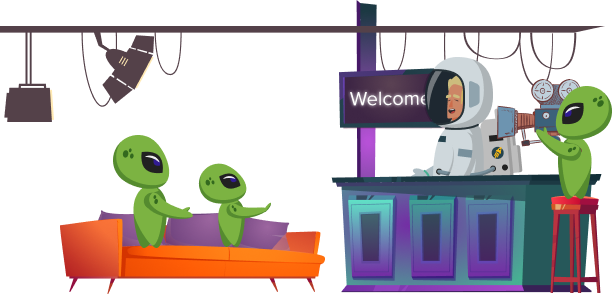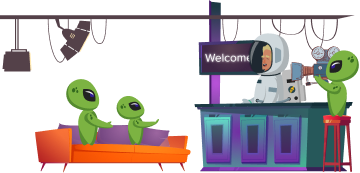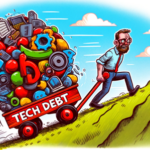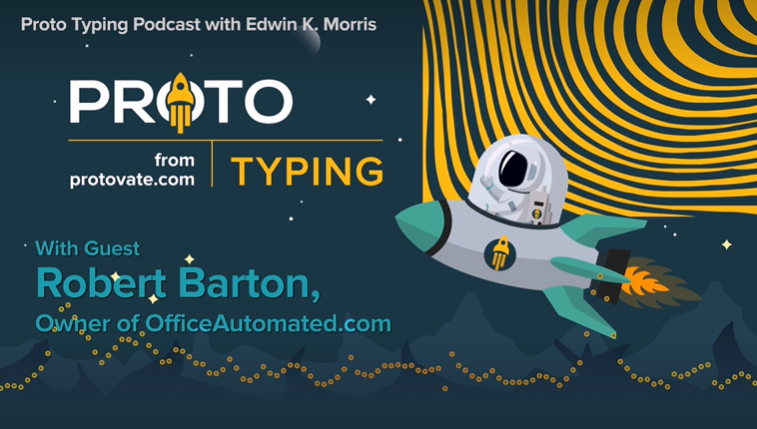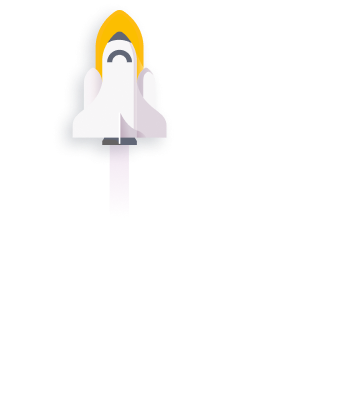Robert Barton, Owner of OfficeAutomated.com talks about how Protovate helped him take his great idea from where is was stagnating to the launch pad and how the process helped him become his own Project Manager.
Edwin K. Morris
I’m Edwin K. Morris, and we’re talking with Robert Barton of Office Automated located in Houston, Texas. And this is Proto Typing, where we discuss all things related to technology, innovation, and prototyping.
Hello, Robert, welcome.
Robert Barton
Hello, how are you?
Edwin K. Morris
I’m great! As you can tell, I’m amped up and ready to talk about everything you’re doing. So we’re talking software hardware, what are we talking about? What’s innovation from your perspective?
Robert Barton
Well, you know, I became affiliated or came to know, Protovate to have them execute a software idea that I had about 10 years ago. And they sort of made what we have now possible, because I engaged several other software, individuals, if you will, or possibly companies, and we made some progress, but they’re just not as organized and as efficient as Protovate.
So I really, I’m almost indebted to them for where we have been able to get to this point, considering when I first started.
I really had no inkling of what software development was and how to accomplish it. And now I have a much better idea. In fact, we’re programming a second software right now with them and continuing the development of the original software.
Edwin K. Morris
So you came to them with an idea that you tried to get facilitated in other places?
Robert Barton
That’s correct. Didn’t make any headway and didn’t make progress to the degree that it was usable, especially at the level that is usable now.
So they took what we had accomplished, which was something, and cleaned it up and developed it further. And I really was able to plug in to a development process and learned a lot from their workflows in order to ultimately, you know, get that, really seeing that one along pretty well, that original software called OfficeAutomated.
And then I learned, you know, what were the important aspects of software development. Now, I know these things, whereas before, I did not have a clue, but they, their process is so efficient, in fact that you can make the argument that even, you know, even a clueless person can participate in their system, you know what I mean? Because that happened.
Edwin K. Morris
So you’re saying your background is not in software development?
Robert Barton
No, not even close. I mean, as a junior high student, I worked on Apple computers, you know, those big, those big giant ones, that was the extent of my software development training.
Edwin K. Morris
So I really want to get to the point is that you’ve you found a niche for something that needed to be, right? You had this idea for this interface and this software to do something. And that the this relationship with Protovate basically gave you all the turned on all the keys for moving forward.
Robert Barton
Yes, yes, exactly. So I had the idea for the software, and know what I knew what I wanted to accomplish, and more, probably, more importantly, what I needed to accomplish with it. And they provided really the mechanism or the framework to allow that to actually happen.
Edwin K. Morris
And it sounds like they weren’t hiding behind the curtain, you know, like, “Oh, we’re not going to tell you what we’re doing and give you the results later.” It sounds like they held your hand through the whole process in your going to school?
Robert Barton
I think that’s very accurate. Actually, yes, they kind of held my hand but not, you know, they didn’t hold my hand because they felt like they needed to, it’s just that their process made so much sense.
I was able to plug into it intellectually, and really kind of understand how we move forward from a development standpoint, but also from like bug, you know, fixing bugs standpoint, and some of the language and just interacting with Project Manager, you know, and the back end developers, the, you know, I forget what it’s called now, the server guys, you know, there’s a bunch of different people within their team that allow this thing to, you know, actually work.
Edwin K. Morris
So we talked about the creation of So tell me, what does this do?
Robert Barton
Well, the idea came about 10 years ago, might have even been 11 years ago now because, you know, I’m a healthcare provider. I’m a chiropractor by degree and we have a clinic that had been busy for a long time, you know, 26 years in practice. And I had some employee turnover. And it was as if every time I lost an employee and hired a new one, I had to repeat myself over and over again over and over.
That so the business really had no foundation or framework in order to plug a person in to a system. And so we created the software to bring a bunch of different pieces together, such as an electronic office manual, a learning management system, we call the LMS, the HR, you know, Task Manager, communication center, statistics, a checklist, daily checklists, you know, morning, lunch, and afternoon, you know, all these things under one login, so that you’re not having to purchase a task manager, software and pay for every employee for that one, and then purchase a, you know, like your procedure licenses and all that stuff.
Edwin K. Morris
Plus all the training you’d have to do for each individual piece.
Robert Barton
Correct. So we have like nine tools and putting the clock in, clock out, you know, all that type of thing. So it’s really about setting a standard, written standard, we have video capability in there as well. And then holding people accountable to that standard through the HR piece.
You know, so it’s not an HR software, and it’s not a Task Manager software, it’s like a whole bunch of things, with different modules all wrapped into one. That’s and so it’s helped small businesses like me, it’s not really an enterprise. It’s not built for IBM to use or anything like that.
It’s built for doctors, and, you know, about 90% of our customer base are physicians and different health care practitioners, a lot of dentist and orthodontist and that type of thing.
Edwin K. Morris
Is it considered a case management type of approach?
Robert Barton
No, not from a, so a case management, meaning like patient cases, no, it’s not, it’s not patient care centered, although you can put, you know, your training of how, your software that used to manage patients, and you can put that training into our software. And then ostensibly, the first thing that an employee would do was was, you know, watch videos or read material associated with, you know, those types of other softwares, you know, what I mean? So it’s basically a training hub, or a in an automated hub to run the business, you know, the business side of the practice.
Edwin K. Morris
Okay. Is this something that is now a in the can software that you’re now duplicating and selling licenses for?
Robert Barton
Yeah, so since 2014, we’ve had our paying customers since 2014. So yeah, we’ve it’s been about eight years that we’ve had paying customers,
Edwin K. Morris
Are you in this would be software as a service? Model? Yes. Okay. Yes. Great. Exactly. So what’s your reach? Where are you operating to? I mean, are you continental US or?
Robert Barton
Well, you know, it’s not us, let me just not make it sound like something that’s not. So let’s, you know, I don’t want to I don’t want to pull the wool over anyone’s eyes. We have about 70 healthcare practices, or businesses that use our software, we have about 2000, employee users are somewhere in that range. So you know, not bad, I have other businesses as well. And I have my practice. So I mean, I do a lot of other things. But we are on global, if you will, could because we have a customer in Dubai, and that that was going to be purchased. And then we have several in Canada and then the US. So but most by, by and large are US based businesses, for sure.
Edwin K. Morris
Okay. Well, that sounds like a success. Do you as a as a small business owner, and it sounds like you’ve got a wide and deep experience with businesses in general, how do you know when you’re successful in this type of business?
Robert Barton
Well, that’s a really good question. So I guess there’s different levels of success with software. And this was completely bootstrapped. So that, you know, that possibly is successful, just in the sense that it pays for itself at this point, and it stands on its own feet.
So I put money in it to kind of get it started. But there are pros and cons to that. The Pro is I kind of consider it can’t be unsuccessful at this point, because it’s been paid for and it pays for itself. So the revenue that comes in, you know, keeps it going so to speak. And we use that revenue to develop the other software that we’re now developing, which was a slightly different development process because I know so much more than when I started.
So now I understand that the design and usability are everything, and the actual programming of the thing is sort of secondary and very important, yeah, but it’s sort of secondary, because that user experience is really what makes it ultimately successful, you know, and for growth and whatnot, but the point is, you know, if you had a venture capitalist type of backing, while the pro on that is you can develop faster, you can make things happen faster with more personnel and man hours, that type of thing, but the con is, it could potentially fail. Because if you did not have a product market fit, and the market did not, you know, accept your offering, then, then you might fail, and you’re gonna lose a bunch of money, and that doesn’t feel very good.
Edwin K. Morris
So you’re kind of beyond the trial period now, by the sounds of it. I mean, you’re really in a growth cycle.
Robert Barton
I am I, you know, it was difficult for a long time to really articulate what the software is. And I do work with a consultant who you know, so the content within the software is very important. And there’s two ways to get content within the software one way is the business owner can create it. And I have a lot of businesses that create their own courses and their own training and their own SOPs and, and that type of thing. And those are really successful people, because they have a mind for, you know, bringing order to chaos.
And that’s kind of what our software does, it helps, it gives them a framework to put that stuff into, so they can have people plug in and hold them accountable. And then there’s others that just aren’t wired that way. And so we almost need to provide, you know, courses and training materials for them. And I think as we’re able to build out more and more, you know, courses and training materials, that’s really what makes the software great is when you put your SOPs and document its position in the business, you know, have video content, we have test questions, you know, to see what the comprehension level is for people. And when you get that level built out, you know, it really works well. And so what you get out of it, what you put into it, and I that has its pros and cons as well, just from a growth standpoint.
So you have to end up convincing people that, okay, you’re gonna purchase this, you know, at least on a monthly level, and then you’re gonna have to put a lot of work into it in order to get it customized for your business, right? To make that, you know, yeah. And some people like that, and some people don’t. So yes, we’re in a growth phase, for sure. But, you know, I now understand that more today, than even probably six months ago, this, this, what I articulated to you is it I can, I can now set an expectation to a business owner all heck of a lot better than I ever could in the beginning, you know?
Edwin K. Morris
Well, and that’s, that’s that proof in the pudding, and you’ve got to, you’ve got to understand it thoroughly. And if it’s a moving target, if it’s a consistently moving target, it’s hard to articulate what the end state is, but you’ve, you’ve taken the time you’ve molded it to fit the business case. And it sounds like it’s a pretty diverse set of tools, as you said, so what what would you suggest if you had that you’re sitting down having a beverage or a cup of coffee with somebody, and they’re like, you know, I’ve had this idea for some software, it’d be kind of a neat case to pitch, what would you tell them to do as a old hat, rapid prototyper that you are now?
Robert Barton
Yes, exactly. No, not another really good question. Thank you. So it’s, yeah, the the product manager aspect of developing software, which is I kind of wear that hat as well, that’s the that’s the person who is, you know, to some degree, dreaming up the software, creating the initial feature set within the software that potentially could have a product market fit. And then designing the software with a UX UI designer. And that’s a tedious process, by the way, but getting those low, low fidelity prototypes, you know, all the way to the high fidelity clickable type prototypes together. That’s actually the first step. You know, I did not go and pull a bunch of people and just, you know, ask, you know, hey, if I built this, would you buy it, I just don’t tend to be that person. If I think it’s a good idea, um, you know, good, bad or indifferent, this probably is not advisable. But it’s a good idea.
Edwin K. Morris
Well, I think I think I think most entrepreneurs operate with that mindset.
Robert Barton
Right. So I kind of needed it myself. I figured, well, if I need it, maybe other people need it and so on and so forth. So but yeah, it’s it’s all about that, designing the product and setting the features and not getting, you know, feature creep. You know, in that type of thing, and that is what, that’s the most important aspect of getting a software project off the ground. And then you have to work with a developer, a back end developer, such as probate, and you know, because without that part of it, obviously nothing works. And that, you know, I was very, very fortunate to find them, because there are a lot of nightmares out there. And I wouldn’t say that the road, the path that I was on was a nightmare. I wouldn’t go that far. But it could have been had I stayed on it, you know, it could have been just it, it might have crashed and burned. And I stayed on that path. And so getting with a company like Protovate, and the support from Brian Pollack and other leadership and whatnot, it’s been a very stable experience for me, so that once that stabilized I could, you know, concentrate on the parts that I have control over, because I don’t know anything about programming. You know, I don’t I don’t know how to code, right?
Edwin K. Morris
Yeah, yeah, I hear you. And I think you’re probably amongst a lot of folks that can see where there’s probably a need, or a fit of something that needs to be created. But you’re like, I don’t have a clue how to do any of that. But as you found out, you don’t necessarily have to know to be the crucible, or the the crux of an idea being created.
You get with the right people, you know, you start, like they always say, you surround yourself with smart people, you surround yourself with people that can get the job done. And then everything just clicks.
But what would you say the process was, like, in the, in the, it sounds like it was more of a relationship, you had a relationship with this process. What was that like?
Robert Barton
Are you talking in the very beginning or now?
Edwin K. Morris
Let’s start with the beginning and end up to now.
Robert Barton
The beginning, you know, the in we’re talking the process to create or bring a software to fruition?
Edwin K. Morris
Well, in your relationship with Protovate, right? How that all kind of, because you said it was more of a learning opportunity for you?
Robert Barton
Well, I, I sort of knew in my ignorance, when I was with the other programmer that the interactions I had with them, and, you know, just the way it was going was not sustainable.
So I knew that, and I came across Brian, in particular, Brian Pollack, somewhere, and I got in touch with him, and he agreed to look at the software, the behind the scenes and do kind of an examination. And I’ll never forget where I was, when I was speaking to him, I was at my office walking down the hallway. And, you know, we would like to work with you, you know, we, we think what you have going on here is worthy of our of our personnel. And it wasn’t like they were they weren’t needing my business. You know, it wasn’t as if they were trying to court me. I was saying, hey, save me.
I didn’t know, you know, it was almost like I was overboard on the boat and didn’t know where the shore was and I just needed a lifeline on the shore, but I was blind to where that was. So he said, you know, we’d like to work with you and he basically plugged me into other systems, you know, so they had a ticket system, they had a communication system, they had a billing system, they had all these, you know, they had a, a kind of an escalation system for problems like from a small problem. And just every once in a while, I’ve had to contact, you know, maybe Brian himself. You know the point is, I was able to plug into their system, and then, and then we took the software that I had at that point and made it better, a lot better. And we’ve actually redone a lot of the modules and whatnot. And I’m actually in a redesign process of that software to completely redesign the whole thing again, and rebuild it on another framework, which, but that’s a backseat right now to the second software I created.
And so that learning curve kind of took me to the creation of the second software, which was about a year process. I don’t know how many hours it was, but it was a year process of back and forth, certainly on a weekly basis to design the, the interface, you know, and it ends up being that software as 130 some odd screens with, you know, some of those screens have, I don’t know, maybe 30 to 50 points of explanation to them, you know, so, there’s a lot you know, it’s a lot of it’s a lot of input and a lot of work and they all have to, you know, you have to put it together sort of on paper and then in prototyping before you can begin to explain to a programmer what it needs to do, you know, and that’s kind of the process. And that’s what I’ve learned through my association with the Protovate is really get that part right first, it’s that plan, you know, you don’t build a house on the go. You don’t decide after you pour the slab, hey, let’s add another couple of feet here. You really handle those things ahead of time and have a proper plan made. And that’s that’s kind of what software is like.
Edwin K. Morris
Yeah, that’s a good way to put it because you do have to have those architectural drawings kind of figured out where the pipes go and the wiring and all the dimensions have to somebody has to figure that, or should, figure that out first, before you meet.
Robert Barton
If you can imagine my initial attempt at software development, it was more like, well, let’s build a house. Let’s let’s get some concrete, some wood, some shingles, and some pipes, put them into a pile and let’s start kind of putting some things together until we need a room, oh we forgot the kitchen, let’s dig a hole and put put the pipes in, you know, we forgot drainage. You know, that’s literally kind of what it was like.
Edwin K. Morris
Yeah, well, that’s so your innovation pipeline has gotten a little cleaner.
Robert Barton
Yes. Yeah, actually. Now we have architectural drawings. Yes and now I know what I’m doing.
Edwin K. Morris
Alright. So pretty soon you’ll be retiring from chiropractic and just doing software development from here on out? Is that the plan?
Robert Barton
Maybe, I don’t know, I don’t know that I would ever retire totally seeing patients, I just want two and a half days a week, right now. And we have two clinics one’s about to open, we have another one opening, like, in the next week or two. Part of part of my efforts are training my other my staff, you know, it’s really a continuation of the original product that we created. I use it for my businesses, you know, so three business, four businesses, including Office Automated that use that software to run the businesses.
Edwin K. Morris
Wow. Well, I guess you’re what’s that old advertisement? Not only am I a customer, I’m not just the owner of the company, but I’m a customer. Right?
Robert Barton
Yeah, right. and to some degree, if, if Office Automated, and we’ve said this with my wife, to some degree, if it only served to organize our own businesses and ever grew beyond its current level, that it might be worth it just for that.
Edwin K. Morris
A lot of that stuff for that type of organizational knowledge flow and keeping things connected. You know, software is cheaper than it used to be. I mean, there’s lot more options out there for small business than there used to be so it’s an exciting time. And you’ve kind of staked your claim and building something that will help other other people. And I just think that’s fantastic.
Robert Barton
The difference between our software and others that are out there is the fact that there’s so many tools under one umbrella or no one login, and there’s not you don’t have to go out and purchase multiple software’s and stitch them together. That’s, that’s really the utility and it’s about as simple as that
Edwin K. Morris
And software guys love hearing that systems don’t talk to each other, and they have to go fix it.
Right. That’s that’s a painful thing. Well, thank you, Robert. I appreciate your time today.
Robert Barton
Well, you’re very welcome. I enjoyed the conversation, it was great questions and it’s nice to reflect on just kind of where I’ve, where I’ve been and where we are right now. And I love talking about Protovate as well, to be honest, because they’re just such a huge tool in this process and I’m just so thankful for them and what can I say Anything they asked me to do, I’m gonna jump at the opportunity to do it for sure.
Edwin K. Morris
That’s great. Well, thank you. That’s a great, that’s a great endorsement. So thank you.
Robert Barton
Yes, I am definitely. I’m high on them for sure.
Edwin K. Morris
Proto Typing is a technology and innovation podcast that is provided by Protovate.
If you have a project or a concept that you want to talk about having a prototype built for, then discover more at Protovate.com.
Protovate pioneers new software, new systems, and new ways of working to bring your concept to life. Our hybrid-shore software development outsourcing model gives you access to the ideal talent to make it happen.
